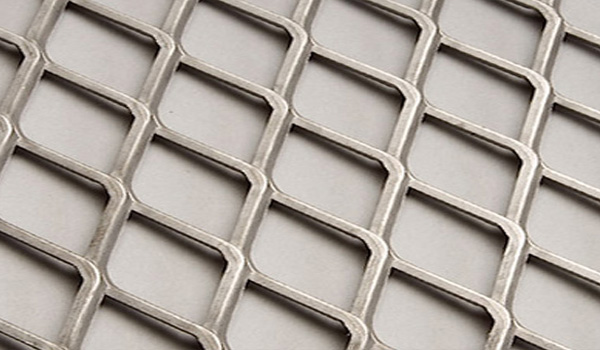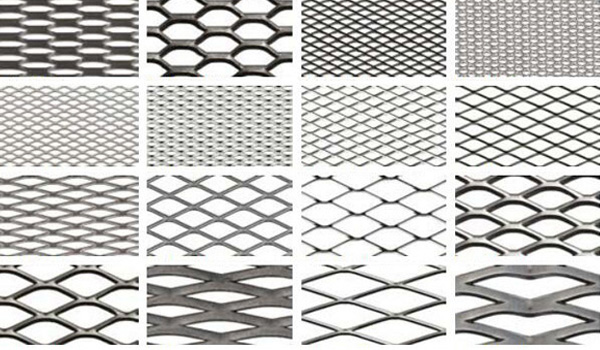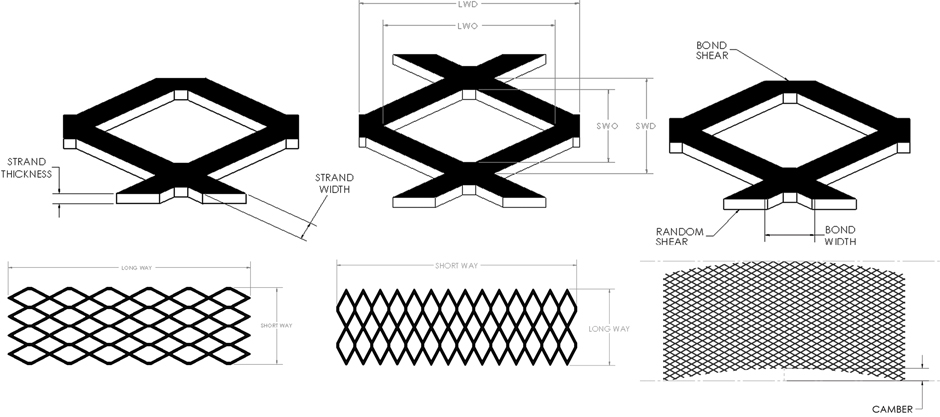Expanded Metal Mesh
Expanded metal is a one-piece metallic mesh without any welds, that reflects a series of uniform openings in diamond shapes. Expanded metal is a type of sheet metal which has been cut and stretched to form a regular pattern (often diamond-shaped) of metal mesh-like material. It is commonly used for fences and grates, and as metallic lath to support plaster or stucco.
- Mild steel
- Galvanised steel
- Stainless steel
- Aluminium
- Brass
- Copper
Type of Metals
Expanded metal is stronger than an equivalent weight of wire mesh such as chicken wire, because the material is flattened, allowing the metal to stay in one piece. The other benefit to expanded metal is that the metal is never completely cut and reconnected, allowing the material to retain its strength.
TYPES OF VARIOUS EXPANDED METAL Mesh
Expanded metal is a one-piece metallic mesh without any welds, that reflects a series of uniform openings in diamond shapes.
LWD
"Long Way of Diamond/Design" dimension
SWD
"Short Way of Diamond/Design" dimension
LWO
"Long Way of Opening" dimension; used to indicate clear opening in the long direction
SWO
"Short Way of Opening" dimension; used to indicate clear opening in the short direction
STRAND THICKNESS
Equal to the thickness of the sheet metal being used
STRAND WIDTH
The amount of metal fed under the dies to produce one strand
BOND SHEARED
Where two strands intersect; eliminates prongs or jagged edges
BOND WIDTH
The width of two intersecting strands
RANDOM SHEAR
This type of shearing leaves prongs or jagged edges
CAMBER
The maximum distance between the edge of the expanded metal and the straight edge is the camber. Bowing in sheet or coil is measured by placing a straight edge along the concave side of the metal, parallel to the LWD, touching both ends of the sheet.
ApplicationsExpanded metal is frequently used to make fences, walkways, and grates, as the material is very durable and strong, unlike lighter and less expensive wire mesh. The many small openings in the material allow flow through of air, water, and light, while still providing a mechanical barrier to larger objects. Another advantage to using expanded metal as opposed to plain sheet metal is that the exposed edges of the expanded metal provide more traction, which has led to its use in catwalks or drainage covers. Large quantities of expanded metal are used by the construction industry as metal lath to support materials such as plaster, stucco, or adobe in walls and other structures.
Expanded metal is also used by artists, especially sculptors, who use the material to form complex 3-dimensional surfaces and compound curves which can then be covered with plaster, clay, or other materials.





